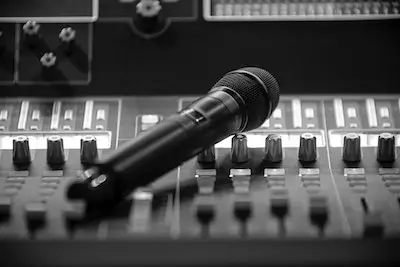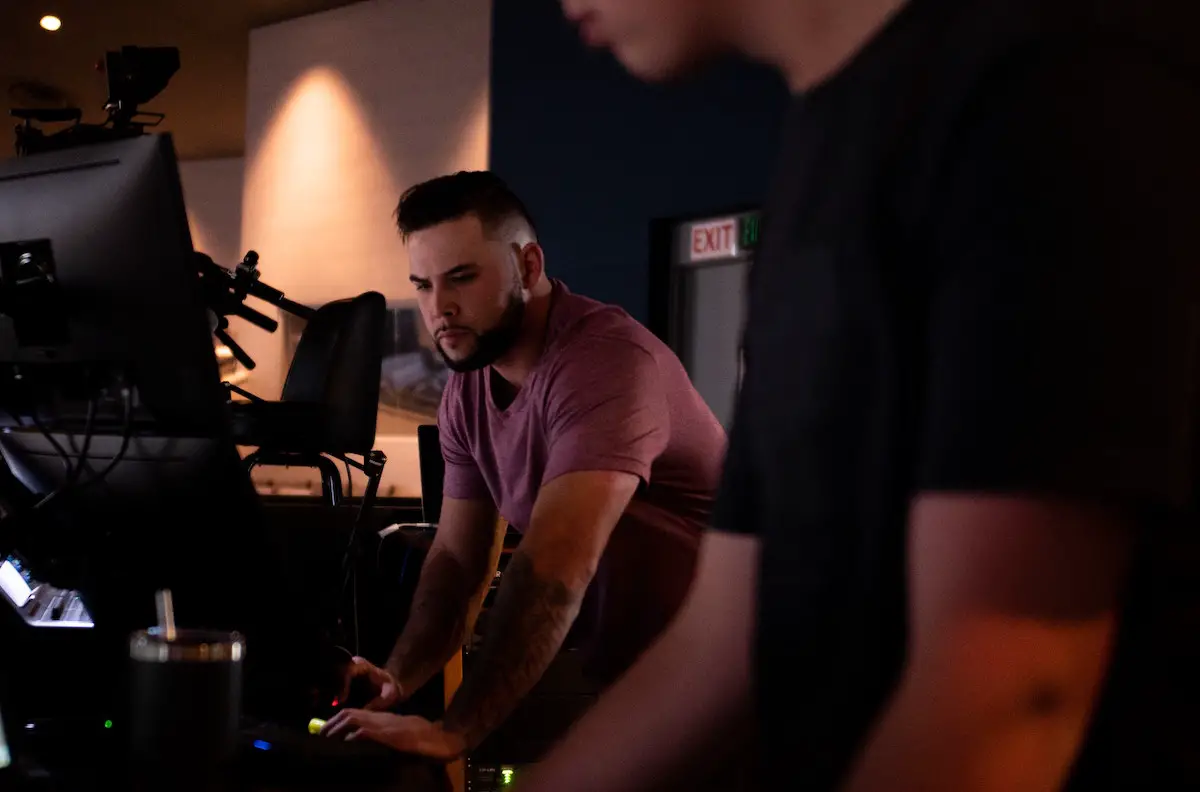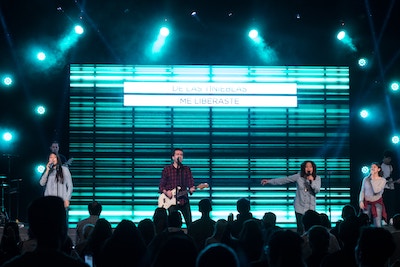Multitrack Community Vs. Loop Community
Debates about which is better: multitrack or looping, have been around for a while. In general, the main difference between these two approaches is that multitrack recording divides audio into separate tracks and then combines them all to create a final mix while looping strings and multiple takes of the same phrase or melody together. Ultimately, there is no right or wrong answer when it comes to choosing between multitrack and looping; different people prefer different approaches.
Both techniques are currently being used in churches today. Multitrack is often favored in churches that have a live band and need to record all the different instruments separately and mix them into one final track. Looping, on the other hand, can use for creating soundscapes and building solos within a song. Ultimately, it depends on your church’s music style and preferences.

Which Is Better Multitrack Or Looping?
To determine the best option, we must first comprehend what each one entails. This involves analyzing the distinctive traits and differences of each option, as well as identifying their weaknesses. Therefore, we will examine each option in detail as we proceed.
Definition Of A Multi-track
If you are interested in audio and music recording, production, and mixing, you may have heard the term “multitrack” before. It refers to the individual tracks in a recording or mixing session that form the foundation of the process.
- They allow for the freedom to record different tracks at different times and mix them with control over each element.
- Multitracks have been a vital part of audio technology for decades and remain important in modern recording and mixing.
This article is about multi-tracks and why they are important. We will explore the history of multitrack recording and explain the difference between multi-tracks and looping.
- We will also discuss the various benefits of multitrack recording and how they can be applied to church music.
- In the end, we will answer the question of which is better; multitrack or looping?
- Essentially, it all depends on what you want to accomplish with your audio project.
- If a single take is needed for a song, looping is usually preferable. But if a more complex mix of tracks is desired, then multitrack recording might be the better choice.
Ultimately, it comes down to personal preference and what works best for the project at hand. There is no definitive answer as to which one is superior; it all depends on your needs and objectives.
What Are Multi-tracks?
To clarify, multi-tracks refer to the separate tracks within a recording or mixing session. They can be found on a console, mixer, or digital audio workstation, as well as stored on multitrack tape or digital media.
- Each element within the mix has its track that can be processed individually – whether the multi-tracks are being used from tape, hard disk, or another source.
- All the multitrack in a project will be of equal length, covering the entire duration of the song; this will allow a mix engineer to playback all the tracks simultaneously while inputting them into a mixer or importing them into a DAW.
- The multitrack has a raw version of the song without any added elements. It is the responsibility of the engineer/producer to include additional recordings if needed and create a final mix.
Note that multitrack does not typically include channels for effect returns or auxiliary channels/buses. To learn more about these features, refer to my article “Audio: Buses Vs. Subgroups, Aux Sends/Returns, VCAs & Groups.”
History Of The Multi-track
In 1955, multitrack recording was introduced and has become a popular method for audio recording and music production. Before this technique, creating stereo records was more difficult as it was necessary to use two recording and playback heads.
- In the past, when there was no multitrack recording, musicians would come together in a studio to perform.
- The audio engineer would then record their performance simultaneously using a microphone(s) or a horn (if it was before 1925 when the electrical recording was introduced) in the studio.
- Before multi-track recording became popular in the 1960s, the normal result of recordings was a single track that could not be easily mixed later.

The goal was to meticulously prepare the signal path before recording to achieve the best possible outcomes.
- With the rise of multi-track recording, artists and sound technicians could layer recordings, consolidate them, and mix multiple tracks into a single mono or stereo output.
- In multitrack recording, several microphones can be recorded on a tape that is divided into multiple tracks, enabling perfect synchronization.
- Later, the recorded audio can be played back from the tape through a mixing console, allowing an audio engineer to add more tracks and mix the music.
- Advances in digital audio technology since the 1970s have made multitrack recording even more efficient.
- Multitrack recording is now a common practice and has become an essential feature of modern digital audio workstations, offering an unlimited number of tracks.
However, it took several decades for technological advancements to reach this point, and we should appreciate the progress that has led us here.
What Is Looping?
Looping refers to the process of repeating a portion of a song using either a looping device, pedal, or plugin. The term “looping” was derived from reel-to-reel tape machines, which were used to record bands before the advent of digital audio.
- Typically, engineers would create a loop out of a section of tape.
- Then feed it through the tape machine.
- Lastly, you would repeatedly backpack and record the sound.
In today’s digital age, making edits to one’s recordings is simple. One can easily manipulate parts within their digital audio workstation and record as many take money need.
- In the past, before the rise of digital audio workstations, editing analog tapes required using a razor blade to physically cut the tape.
- Next, you would splice it back together with tape.
- As one may imagine, creating music back then was a laborious and meticulous process.
Looping has become a major part of Church Music. By using digital audio workstations, Church Musicians can easily create loops that allow them to perform live while still being able to incorporate elements from their recordings. Moreover, it also allows them to spontaneously rearrange and layer different tracks on the fly in order to create something new.
Benefits Of Using Loops
Looping enables one to create songs by using only the best parts of a rhythm or instrumental section, rather than having to play through the entire song. This can make music composition more efficient as it saves time in the production process.
- Additionally, looping facilitates the generation of ideas quickly and layering them with MIDI or audio tracks in a Digital Audio Workstation (DAW).
- Looping is a technique that enables musicians to create intricate drum patterns or guitar sequences that may be difficult to play live, enhancing the quality of their music.
During live shows, a looper pedal or similar equipment can be to loop a drum part and a synthesizer or bass line on top of it. For solo artists, looping vocals can create an effect as if there were backing singers.
Compare Looping To Multi-track
To clarify, the choice between multitrack recording and looping depends on your goal. If you want to produce a high-quality album with many songs, multitrack recording is the better option. This allows multiple musicians to record different parts simultaneously, resulting in a richer sound without needing to record each track individually.
- If you want to record only a few tracks quickly, then looping might be the better choice.
- Looping can also help church music directors instruct choir members during rehearsals.
- By recording a loop of the choir’s section, the director can replay it until the singers have learned it.
- Both multitrack recording and looping are effective tools for creating great music.
The decision between the two should be based on the job’s requirements: producing great music, creativity, and perseverance are key, regardless of the technique used.
- Throughout history, from classical composers to modern musicians, these qualities have been crucial for music production.
- If you’re a musician seeking to create exceptional music, consider trying multitrack recording or looping.
- By combining these tools in the right way, you can achieve a one-of-a-kind creation.
Musicians can create fantastic music by combining multitrack recording and looping. Whether you choose one technique or the other, you can always make great music with creativity and perseverance.
- Do not hesitate to experiment with these powerful tools; you might produce amazing songs.
- Ultimately, the decision between multitrack recording and looping should depend on the specific task and desired outcome.
Whether you’re creating a full album or just a single song, utilizing these techniques can help your music stand out. It is important to let your creativity flow and explore the possibilities.
Conclusion
When it comes to music production, multiple techniques are available for use. Multitrack recording anding are two of them. Both allow musicians to create great music quickly and easily. Depending on the task, one technique may be better suited than the other; sometimes a combination of both is best.
In summary, when deciding between multitrack recording and looping, it is important to consider the desired outcome and what kind of music you would like to produce. By taking into account your goal and budget, as well as the available tools, you can create excellent music in no time. With creativity and perseverance, any musician can make great music.
Remember, if you want to create great music. You must try multitrack recording, and looping are two powerful tools that can help you get there.














